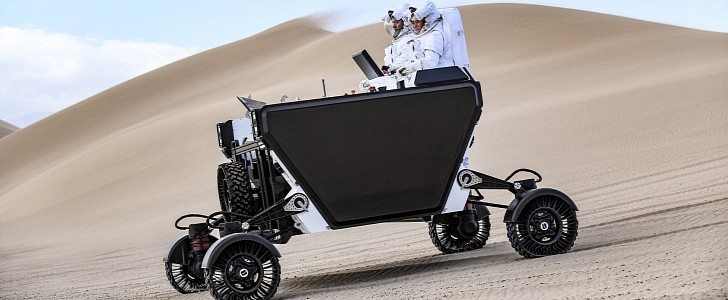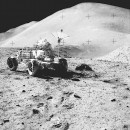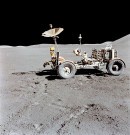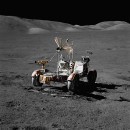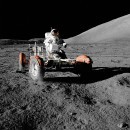As NASA is gearing up for the second Moon exploration effort, space startup Venturi Astrolab is putting the finishing touches on what it hopes will become the official Moon Buggy: FLEX.
FLEX, which stands for Flexible Logistics and Exploration, is more than a Moon buggy because it is the result of a more holistic approach. It was designed as a multi-functional rover that would bring sustainable first- and last-mile transportation on the Moon and Mars, not just for the upcoming missions but for a possible future establishment there. It can be operated remotely or manually and can serve both for cargo hauling and people transport.
In short, FLEX is the not-so-little buggy that can.
Designed around a modular payload interface that supports intermodal transportation, FLEX is supposed to meet the mobility requirements of sustained human presence on the Moon and Mars. Thanks to its revolutionary mobility system architecture, it can pick up and deposit payloads, as well as double as an unpressurized rover for two astronauts. It can be used both as a lander and rover, depending on the situation.
“For humanity to truly live and operate in a sustained way off Earth, there needs to exist an efficient and economical transportation network all the way from the launch pad to the ultimate outpost,” Jaret Matthews, Founder and CEO of Astrolab, explains. “Currently, there is a gap in the last mile and Astrolab exists to fill it.”
FLEX has already been out on its first test drive, though not yet on the Moon. Astrolab, together with retired NASA astronaut Chris Hadfield, who serves as Advisory Board Member at the startup, took a full-scale prototype out for a spin in the California desert, where it performed a series of tasks it would also perform on the lunar surface, assuming NASA picked it up as official rover. These included transporting a crew of two and picking up and dropping a variety of payloads while navigating through rough terrain at a top speed of 15 kph (9.3 mph).
Two videos of the test drive are available at the bottom of the page. In the first one, Hadfield praises FLEX for its “size and capability” and expresses excitement at the “intuitive sense of what this rover can do.”
In short, FLEX is the not-so-little buggy that can.
Designed around a modular payload interface that supports intermodal transportation, FLEX is supposed to meet the mobility requirements of sustained human presence on the Moon and Mars. Thanks to its revolutionary mobility system architecture, it can pick up and deposit payloads, as well as double as an unpressurized rover for two astronauts. It can be used both as a lander and rover, depending on the situation.
“For humanity to truly live and operate in a sustained way off Earth, there needs to exist an efficient and economical transportation network all the way from the launch pad to the ultimate outpost,” Jaret Matthews, Founder and CEO of Astrolab, explains. “Currently, there is a gap in the last mile and Astrolab exists to fill it.”
FLEX has already been out on its first test drive, though not yet on the Moon. Astrolab, together with retired NASA astronaut Chris Hadfield, who serves as Advisory Board Member at the startup, took a full-scale prototype out for a spin in the California desert, where it performed a series of tasks it would also perform on the lunar surface, assuming NASA picked it up as official rover. These included transporting a crew of two and picking up and dropping a variety of payloads while navigating through rough terrain at a top speed of 15 kph (9.3 mph).
Two videos of the test drive are available at the bottom of the page. In the first one, Hadfield praises FLEX for its “size and capability” and expresses excitement at the “intuitive sense of what this rover can do.”
